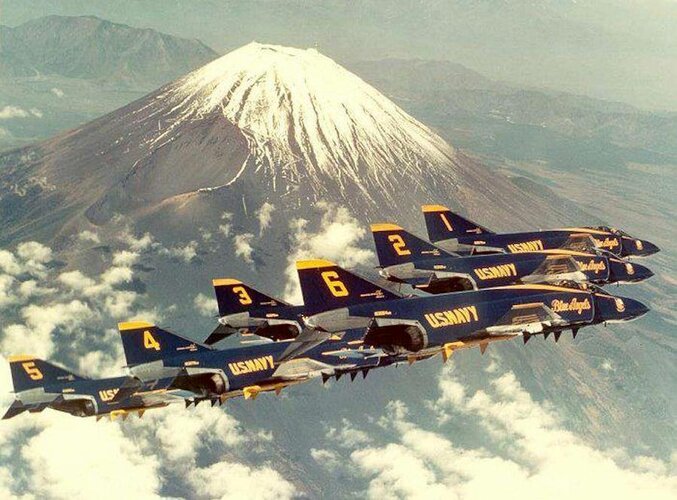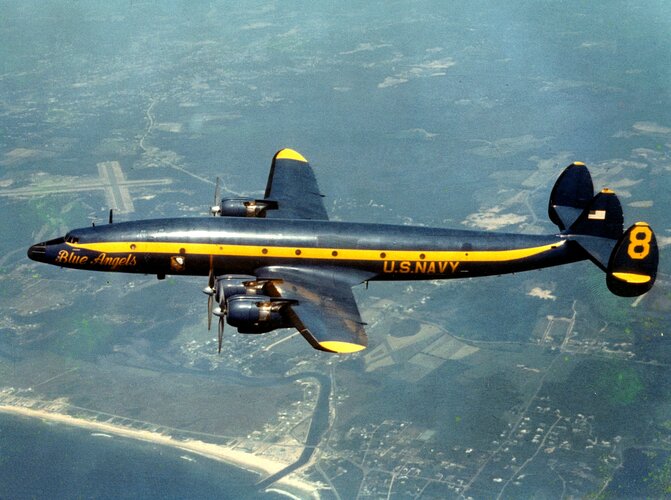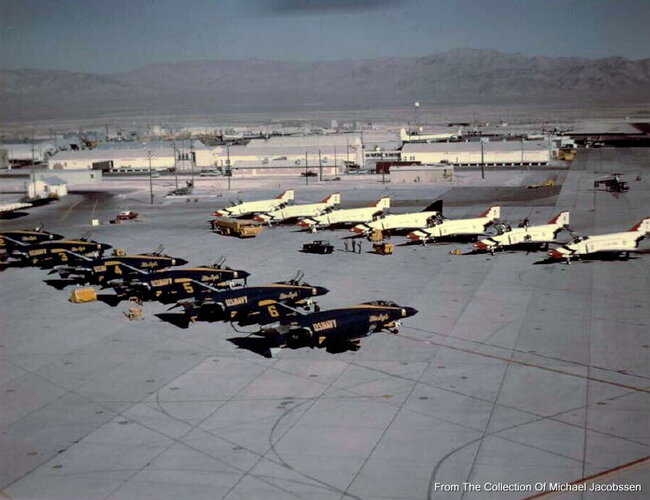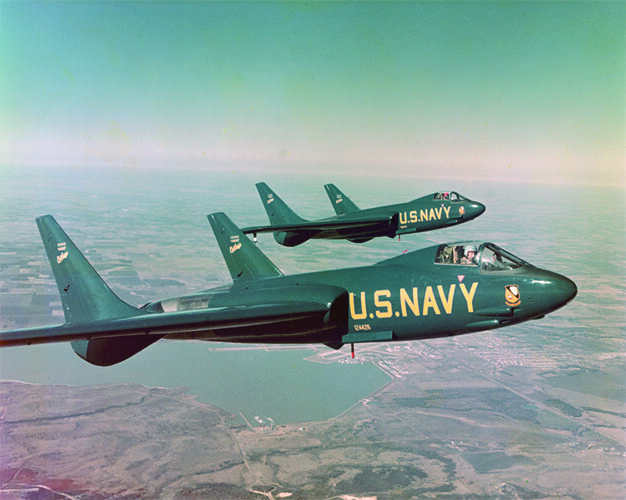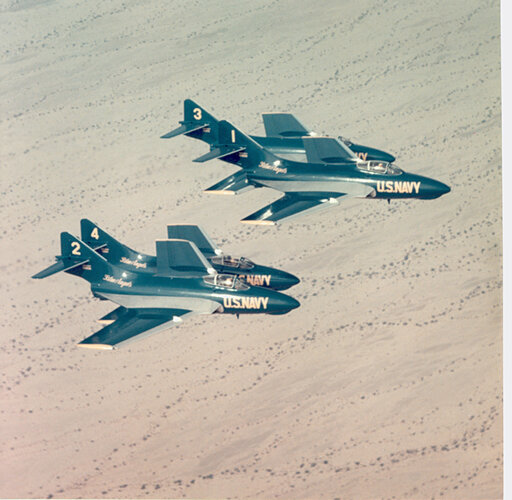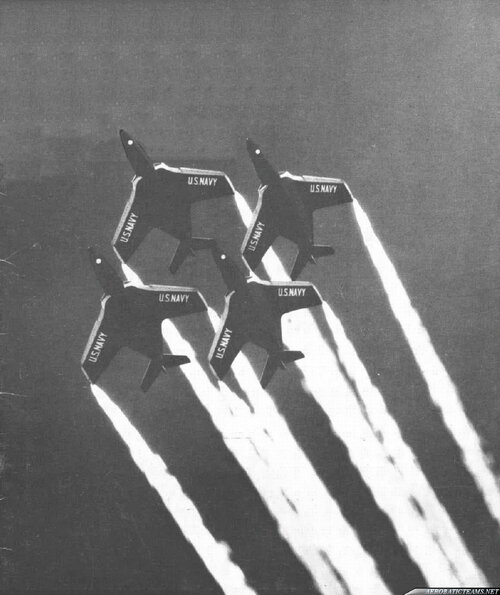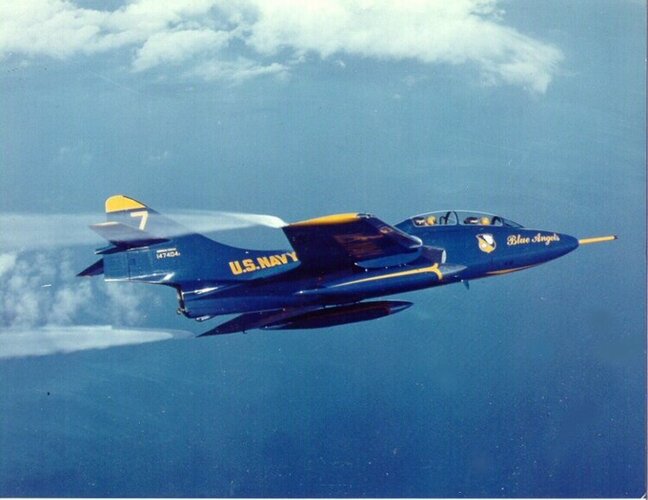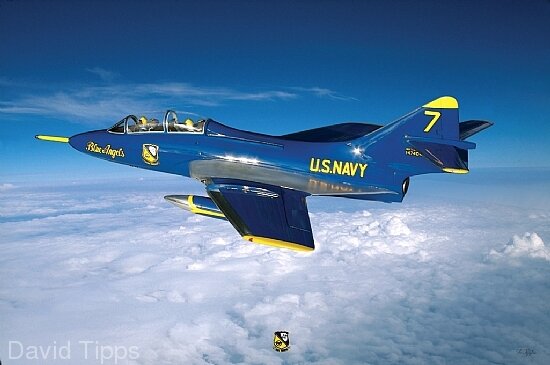You are using an out of date browser. It may not display this or other websites correctly.
You should upgrade or use an alternative browser.
You should upgrade or use an alternative browser.
Blue Angels
- Thread starter sferrin
- Start date
taildragger
You can count on me - I won a contest
- Joined
- 2 November 2008
- Messages
- 386
- Reaction score
- 447
Their previous airplanes were some of the last 1st generation hornets in US service and were apparently worn out and getting expensive to maintain.
Silencer1
That now I am the Ruler of the Queen's Navee!
- Joined
- 3 August 2009
- Messages
- 897
- Reaction score
- 534
Sferrin, thanks for sharing the video!
Looks, like with Super Hornet introduction, Blue Angels livery changes a bit. This aircraft have different air intakes, which allows to paint more massive "US Navy" on their sides.
Looks, like with Super Hornet introduction, Blue Angels livery changes a bit. This aircraft have different air intakes, which allows to paint more massive "US Navy" on their sides.
- Joined
- 12 May 2008
- Messages
- 225
- Reaction score
- 423
Glad you like the lines, Tomcat; my group at Northrop did the lines for the inlets, center and aft fuse and the vertical tails of the Rhino. Northrop-designed aircraft don't look like an F-35 covered in lumps and bumps!
- Joined
- 3 June 2011
- Messages
- 17,596
- Reaction score
- 9,700
Did you work on the P530 at all? Always loved that iteration.Glad you like the lines, Tomcat; my group at Northrop did the lines for the inlets, center and aft fuse and the vertical tails of the Rhino. Northrop-designed aircraft don't look like an F-35 covered in lumps and bumps!
- Joined
- 11 March 2012
- Messages
- 3,023
- Reaction score
- 2,740
Amusing how the US Navy can fly an entire squadron of F-18E purely "for show" while allies (e.g. Canada) struggle to keep enough CF-18A serviceable to provide a force large enough to maintain expertise.
- Joined
- 12 May 2008
- Messages
- 225
- Reaction score
- 423
No - before my time in ADDid you work on the P530 at all? Always loved that iteration.Glad you like the lines, Tomcat; my group at Northrop did the lines for the inlets, center and aft fuse and the vertical tails of the Rhino. Northrop-designed aircraft don't look like an F-35 covered in lumps and bumps!
Don´t miss The Blue Angels (2024) documentary in IMAX and on Prime:

View: https://youtu.be/PPUnCCqctrU
The Blue Angels (2024) Movie Tickets & Showtimes Near You
Soar with The Blue Angels in a brand-new documentary featuring never-before-seen footage that chronicles a year with the Navy’s elite Flight Demonstration Squadron.
www.imax.com

BlackBat242
OK, I changed my personal text ;)
- Joined
- 10 April 2013
- Messages
- 957
- Reaction score
- 2,428
The Super Hornets prior to lot 26 (Block I) cannot take the newer AN/APG-79 AESA radar... they were completed with the same AN/APG-73 radar of the F/A-18C/Ds. These Block I Super Hornets total 147 – 64 F/A-18Es and 83 F/A- 8Fs,Amusing how the US Navy can fly an entire squadron of F-18E purely "for show" while allies (e.g. Canada) struggle to keep enough CF-18A serviceable to provide a force large enough to maintain expertise.
Starting with lot 26 (Block II), the Super Hornets forward fuselage was altered so it could take the larger -79, but were still fitted with the -73 for a few lots (~130 airframes). The later Block II Super Hornets all got the -79 radar, and the compatible Block IIs were retrofitted with the -79 during depot maintenance.
That left the Block Is - a reduced-size -79 (the AN/APG-79(V)4) was developed for both the later F/A-18C/Ds (the USMC installed them in ~80 of these aircraft), and some of the Block I F/A-18E/F airframes.
Also, Block I F/A-18Fs were fitted with full flight controls {edit for the rear seat} for use as training aircraft - Block II and later -Fs lack these, and have improved equipment for WSO duties.
From what I had read a few years ago, the USN was NOT going to modernize about 75 of the Block Is - and it is from these lower-capability Super Hornets that the Blue Angels got their airframes. Most of the unmodified ones will be with the training squadrons and used for spares.
Last edited:
BlackBat242
OK, I changed my personal text ;)
- Joined
- 10 April 2013
- Messages
- 957
- Reaction score
- 2,428
BlackBat242
OK, I changed my personal text ;)
- Joined
- 10 April 2013
- Messages
- 957
- Reaction score
- 2,428
Man, those Cutlass demos must have been something. I can just hear the announcer, now:
“Ladies and gentlemen, we’ve got most of the kinks ironed out of this bird, but still, if we could ask you to cross your fingers and hope real hard as they make their take off run, it would be appreciated…”
“Ladies and gentlemen, we’ve got most of the kinks ironed out of this bird, but still, if we could ask you to cross your fingers and hope real hard as they make their take off run, it would be appreciated…”
BlackBat242
OK, I changed my personal text ;)
- Joined
- 10 April 2013
- Messages
- 957
- Reaction score
- 2,428
Quoting from Wiki:
The Navy Flight Demonstration Squadron, the Blue Angels, flew two F7U-1 Cutlasses (BuNos 124426 & 124427) as a side demonstration during their 1953 show season in an effort to promote the new aircraft, but did not use them as part of their regular formation demonstration. Both the pilots and ground crews found the aircraft generally unsatisfactory, and it was apparent that the type was still experiencing multiple teething troubles. However, there were political pressures to adopt the Cutlass, both from several senior officers and from senators. Among the failures were landing gear failures, hydraulic failures, engine fires while in the air and, on one occasion, a landing gear door fell on a spectator grandstand but, through sheer luck, did not injure anyone.
During the Blue Angels' first airshow appearance in 1953, pilot Lt Edward "Whitey" Feightner, the former program manager for the F7U, experienced a total loss of hydraulics on a full afterburner takeoff and steep climb. While trying to gain enough altitude for ejection he was able to stay with the aircraft until the backup system came on. He clipped trees on the end of the runway, causing the left engine to flame out. With hydraulic fluid streaming back in a bright flame, he made a hard turn and got the plane back on the runway, much to the excitement of the crowd. Later, while traveling to an airshow at Naval Air Station Glenview in Chicago, Illinois, another Blue Angel pilot, Lt Harding MacKnight, experienced an engine flameout in his Cutlass, forcing him to make an emergency landing at NAS Glenview. Traveling with him, Feightner was redirected to make his landing at Chicago's former Orchard Airpark, which had been expanded and renamed O'Hare Airport. The runway had just been completed and was covered with peach baskets to prevent aircraft from landing until it was opened. Feightner was told to ignore the baskets and land on the new runway. As a result, Feightner's F7U became the first aircraft to land on the new runway for Chicago's O'Hare International Airport.
Following these incidents, the two Cutlasses were deemed unsuitable for demonstration flying and were flown to Naval Air Station Memphis, Tennessee, where they were abandoned to become aircraft maintenance instructional airframes for the Naval Technical Training Center. The Blue Angels would opt to use the Grumman F9F Panther in place of the Cutlass.
"With hydraulic fluid streaming back in a bright flame, he made a hard turn and got the plane back on the runway, much to the excitement of the crowd."
And thus the dump and burn was introduced to the delight of air show audiences the world over
And thus the dump and burn was introduced to the delight of air show audiences the world over
Similar threads
-
Stealing secrets from the ether: missile and satellite telemetry interception during the Cold War
- Started by Flyaway
- Replies: 4
-
-
-
-

